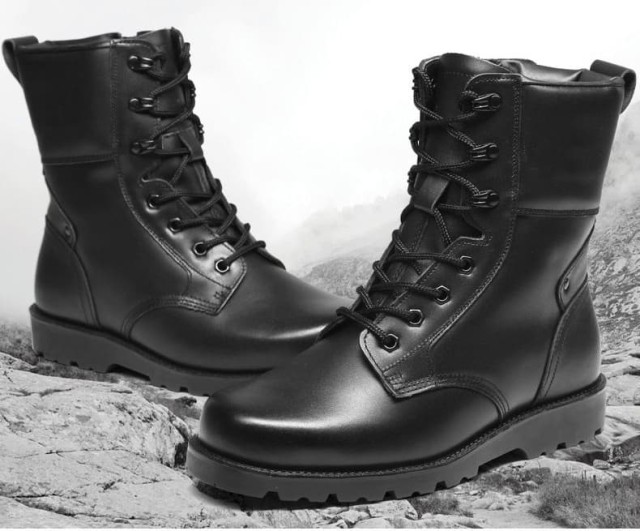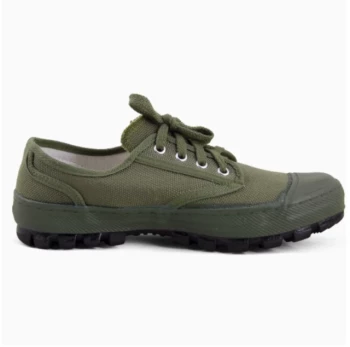When evaluating luxury footwear, few construction methods rival the longevity and value of Goodyear Welt shoes. Unlike disposable fast-fashion alternatives, these shoes are engineered for decades of wear through resoling—a feat made possible by artisanal stitching techniques and premium materials. Let’s explore how the craftsmanship behind each pair justifies their higher upfront cost.
The Art of Goodyear Welt Construction
Anatomy of a Goodyear Welt Shoe: Stitching, Welt, and Cork Bed
Goodyear Welt construction begins with stretching the leather upper over a last (a foot-shaped mold) and securing it with temporary nails. A canvas rib is stitched to the upper’s edge, creating a foundation for the welt—a strip of leather or rubber that bridges the upper and sole. Key steps include:
- Hand-Stitched Precision: The welt is sewn to the upper through the rib, forming a flexible yet durable bond.
- Cork Filling: A layer of resinated cork is placed between the insole and outsole, molding to the wearer’s foot over time for personalized comfort.
- Reinforced Structure: A wooden shank adds arch support, while the outer sole is stitched under high pressure for water resistance.
Research shows this method allows soles to be replaced repeatedly without damaging the upper, extending the shoe’s lifespan significantly.
The Human Factor: Why Artisan Labor Defines Luxury
Mass-produced shoes rely on adhesives and machines, but Goodyear Welt construction demands skilled handiwork. Artisans spend hours on tasks like:
- Hand-stitching welts with lockstitches that resist unraveling.
- Shaping soles with hot irons for a polished finish.
- Inspecting each pair for imperfections before shipment.
This labor-intensive process ensures superior durability—a hallmark of brands like Alden and Crockett & Jones.
Goodyear Welt vs. Fast Fashion: A Cost-Benefit Breakdown
Cemented vs. Blake Stitch vs. Goodyear Welt: Lifespan and Repair Costs
| Construction Method | Avg. Lifespan | Resoleable? | Repair Cost |
|---|---|---|---|
| Cemented (Glued) | 1–3 years | No | N/A |
| Blake Stitch | 3–5 years | Limited | Moderate |
| Goodyear Welt | 10+ years | Yes | Low |
Goodyear Welt shoes cost more upfront but save money long-term. For example, resoling a pair every few years can extend their life for decades, while glued shoes must be discarded once the sole wears out.
Case Study: How Resoling Extends Shoe Life by Decades
A well-maintained pair of Church’s oxfords can last 20+ years with periodic resoling. The welt stitching preserves the upper’s integrity, allowing cobblers to replace soles without compromising fit. Over a decade, this reduces waste and cost-per-wear dramatically.
The Hidden Economics of Luxury Footwear
Initial Cost vs. Lifetime Value: A 10-Year Comparison
Consider two $200 shoes:
- Fast Fashion: Replace every 2 years → $1,000 spent over 10 years.
- Goodyear Welt: $600 initially + 2 resoles ($100 each) → $800 total.
The latter offers better comfort, aesthetics, and sustainability—proof that luxury footwear is an investment, not an expense.
Iconic Brands Using Goodyear Welt Construction
Brands like Crockett & Jones and Our Legacy prioritize this method because:
- Durability: The welt acts as a barrier against moisture and wear.
- Comfort: Cork molding adapts to the foot’s shape.
- Heritage: The technique dates back to the 19th century, symbolizing timeless quality.
Step Into Long-Term Value with 3515 Footwear
At 3515, we craft footwear designed to outlast trends through meticulous Goodyear Welt techniques. For distributors and brand owners seeking bulk orders of durable, resoleable shoes, our production expertise ensures premium quality at scale.
Ready to offer your customers footwear that combines luxury with lifetime value? Partner with 3515 to elevate your inventory.
Related Products
- Durable Mid-Cut Tactical Boots for Wholesale & Private Label
- Wholesale Durable Mid-Cut Tactical Boots for Custom & Private Label Brands
- Wholesale Customizable Suede Safety Boots - Puncture-Proof with Velcro Closure
- Wholesale Leather Derby Shoes Manufacturer | Customizable Business & Dress Footwear
- Wholesale Modern Comfort Shoes with Dial Closure for Private Label & Bulk Orders
Related Articles
- How Tactical Boots Solve Real-World Challenges: From Work Sites to Wilderness
- How Tactical Boots Solve Critical Challenges in Law Enforcement Operations
- How Tactical Boots Solve Everyday Challenges: From City Streets to Job Sites
- How Tactical Boots Are Engineered to Last: The Science Behind Long-Lasting Performance
- How Tactical Boots Deliver Long-Term Value: A Cost & Performance Breakdown



















